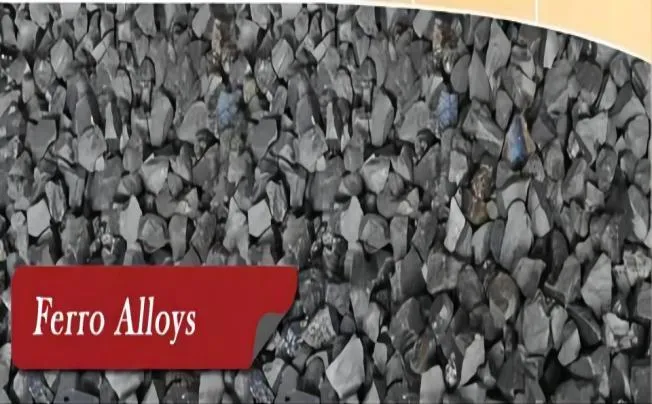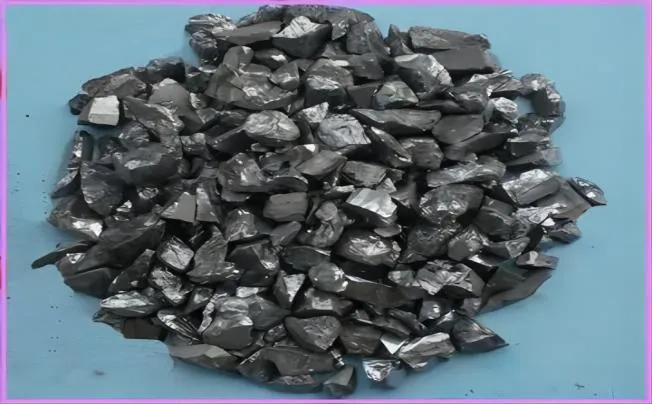How much do you know about ferrosilicon?
- Categorization
The four types of ferrosilicon are high silicon ferrosilicon (GG), ordinary ferrosilicon (PG), low aluminum ferrosilicon (DL), and high purity ferrosilicon (GC), based on the smelting process. Ferrosilicon that has been refined outside of a furnace and has a low impurity element level is referred to as high-purity ferrosilicon.
- Ways to communicate the brand number
The classification of ferrosilicon is represented by the first two characters, which are high silicon ferrosilicon (GG), ordinary ferrosilicon (PG), low aluminum ferrosilicon (DL), and high purity ferrosilicon (GC); the ferrosilicon product is then represented by the code name, such as FeSi; the content (mass fraction) indicates the lower limit of 97%; and finally, the content (mass fraction) shows the primary impurity element and the highest limit of the outcome; for instance, Al1.5 indicates the primary The final one is the categorization (A/B/C) based on the level of secondary impurity elements, which is restricted to high-purity ferrosilicon. The impurity element is aluminum, and the top limit of the control is 1.5%.
- Specifications for chemical composition
Based on silicon and its impurity level (mass fraction) and applications, ferrosilicon is categorized into four groups and 40 brands. These include nine high-silicon brands, ten ordinary brands, eight low-aluminum brands, and thirteen high-purity brands.
- Physical state requirements: The thickness of FeSi72~FeSi75 series ferrosilicon ingots produced by iron mold casting shall not exceed 100mm; the thickness of FeSi40, FeSi65, and FeSi70 ingots shall not exceed 80mm; or the ferrosilicon shall adopt a direct forming casting process, and the segregation of silicon content shall not exceed 3.0%.
Production of ferrosilicon 70
In the ferroalloy business, silicon-based alloys such as 70 ferrosilicon alloy and industrial silicon are extensively utilized in the manufacturing of nonferrous metals, steel, casting, and other industrial products. Silica is a raw ingredient used in the production of 70 ferrosilicon alloys and industrial silicon. It is placed in a submerged arc furnace after being cleaned with water and combined with a carbonaceous reducing agent. High-temperature carbothermal reduction is used to produce metallic silicon and ferrosilicon alloys.
A specific particle size range must be met by the charge in order to guarantee permeability during the manufacturing of 70 ferrosilicon alloy and industrial silicon. Silicon ore that has a particle size of less than 20 will be filtered throughout the cleaning process to prevent it from getting into the submerged arc furnace and compromising the charge’s permeability. This portion of silicon ore with a particle size of less than 20 is typically stockpiled and abandoned due to ineffective utilization techniques, wasting silicon ore resources and raising the cost of producing industrial silicon and ferrosilicon alloys.
Large volumes of silica powder are present in the flue gas produced during the manufacturing of industrial silicon and 70 ferrosilicon alloys. Following collection by dust extraction machinery, 80.5% silica content micro silica powder is produced. Currently, microsilica fume has limited application and little economic value; it is mostly utilized as an additive in concrete, refractory materials, and other industries. Because of this, sales of microsilica powder are uneven, and a sizable quantity of them are stacked up in the plant area, taking up space for production and polluting the surrounding area. Currently, there is no viable method for making use of the micro-silica powder and small-size silicon ore (particle size <20 mm) that are generated during the manufacturing of 70 ferrosilicon alloy and industrial silicon. A significant amount of micro-silica powder and small-size silicon ores are piled up in the factory area, which not only wastes silicon ore resources and lessens the factory’s economic benefits but also takes up a significant amount of the production area and pollutes the area around the factory. endanger the normal growth of businesses. In the ferroalloy industry, finding efficient ways to use micro silica powder and small particle-size silica ores has become a pressing issue.
Applications of Ferrosilicon 70
- Production of Prealloys: Magnesium ferrosilicon (MgFeSi) and other prealloys are made from ferrosilicon 70. Magnesium and trace amounts of rare-earth metals are present in MgFeSi, which is used to produce ductile iron. It facilitates the development of graphite nodules, which give ductile iron its flexible quality and aid in regulating the initial silicon level.
- Deoxidizer in Steelmaking: The steelmaking sector uses ferrosilicon 70 as a deoxidizer. By keeping carbon from being lost and enhancing the quality of the finished product, it aids in the removal of oxygen from molten steel. It is added to the steel production process to modify the final product’s and the melt’s characteristics.
- Additive in Cast Iron: Ferrosilicon 70 is used as an additive in cast iron to control the initial silicon content. It plays a role in the formation of graphite nodules, which make cracking more difficult. Unlike gray cast iron, which forms graphite flakes, ductile iron contains graphite nodules that enhance its flexibility.
- Magnesium Production: Ferrosilicon 70 is used in the Pidgeon process to produce magnesium from dolomite. It acts as a reducing agent, facilitating the reduction of magnesium oxide to produce magnesium metal.
- Electrical Transformers: Ferrosilicon 70 is used in the manufacture of sheets for the magnetic circuit of electrical transformers. It contributes to the magnetic properties of the transformer’s core. 6. Hydrogen Production: Ferrosilicon 70 is involved in the industrial synthesis of trichlorosilane, which is used in hydrogen production.





